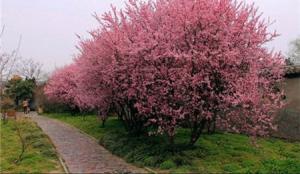Introduction
Tree planting is one of the most significant acts of ecological conservation. It is a widespread practice that involves the introduction of new trees or the regeneration of existing forest land. In recent years, the process has gained more attention as governments and private organizations recognize the importance of conserving natural habitats. Tree planting is a complex process that involves various methods with the primary goal of enhancing the environment. This article explores the various methods of tree planting and how they work towards achieving a sustainable ecosystem.
Method 1: Direct Seeding
Direct seeding is a tree planting method in which seeds are put into the soil for germination. This method is ideal for planting trees in forest areas, public parks, or large-scale afforestation programs. Direct sowing takes place by spreading seeds onto the soil and requires low labor costs. Although the process is simple, its success depends on the quality of the seed and the condition of the soil. Direct seeding is a long-term approach to increase the forest cover, and it may take years before the trees grow to maturity and provide ecological benefits such as carbon sequestration and biodiversity conservation.
Method 2: Transplanting
Transplanting trees involves moving a tree from one location to another. The transplanting process involves removing the tree from its original spot and planting it into its new location. This method is suitable for trees that have outgrown their current location, or it is necessary to relocate them for various reasons such as urbanization or land-use change. Transplanting trees has the advantage of maintaining established mature trees, which provide immediate ecological benefits. However, the method is labor-intensive, and it requires skilled personnel to ensure the transplant is successful. Also, this method may lead to some tree mortality if the tree is not handled correctly.
Method 3: Agroforestry
Agroforestry involves planting trees on farmland to integrate food crop production with tree planting. This method combines the production of wood and non-timber forest products with the production of food crops. The trees provide many ecological benefits such as soil conservation, carbon sequestration, and biodiversity conservation. The presence of trees on farmland also enhances the aesthetic value of the farm, making it an eco-friendly and sustainable environment for crop production. The success of agroforestry depends on selecting the right tree species for the soil type, weather conditions, and the farmer's needs. This method requires regular tree maintenance and management to ensure its success.
Method 4: Shelterbelts
Shelterbelts are rows of trees planted to reduce the effects of wind and erosion on farmland. Shelterbelts act as windbreaks, slowing down the wind speed and trapping soil particles that cause erosion. This method is suitable for farmland that is exposed to strong winds, and it prevents soil degradation and the loss of nutrients. Shelterbelts also provide ecological benefits such as carbon sequestration and biodiversity conservation. The success of shelterbelts depends on selecting the right tree species, spacing, and arrangement. It is vital to choose trees that can withstand strong winds, and they should be spaced appropriately.
Conclusion
Tree planting is a crucial component of ecological conservation. The methods of tree planting vary, depending on the objectives of the project. The four methods explored in this article are direct seeding, transplanting, agroforestry, and shelterbelts. These methods have different objectives, and they work together to achieve sustainable ecosystems. Proper techniques, tree species selection, and regular tree maintenance are essential for the success of any tree planting project. It takes time for trees to grow to maturity, but the ecological benefits they provide are worth the investment of time and resources.

 how many times do yo...
how many times do yo... how many planted tre...
how many planted tre... how many pine trees ...
how many pine trees ... how many pecan trees...
how many pecan trees... how many plants comp...
how many plants comp... how many plants can ...
how many plants can ... how many plants and ...
how many plants and ... how many pepper plan...
how many pepper plan...
































